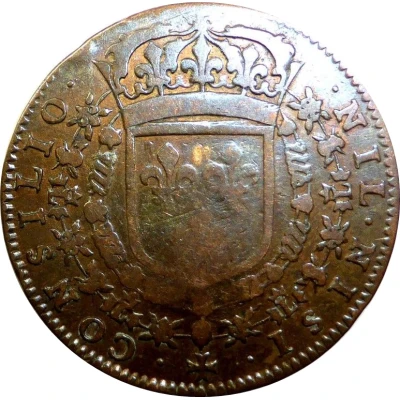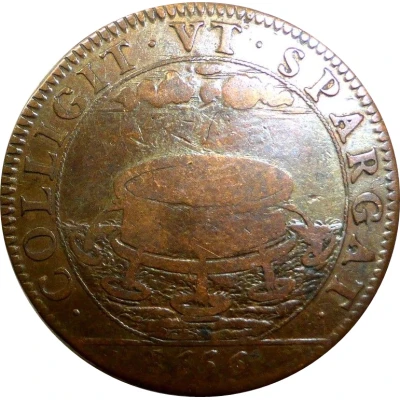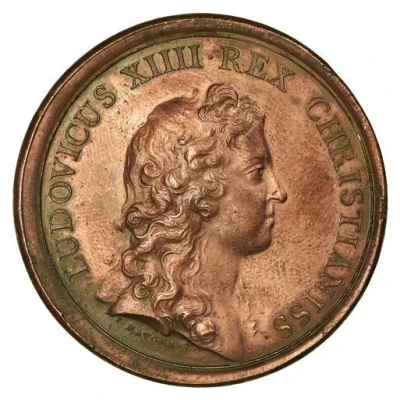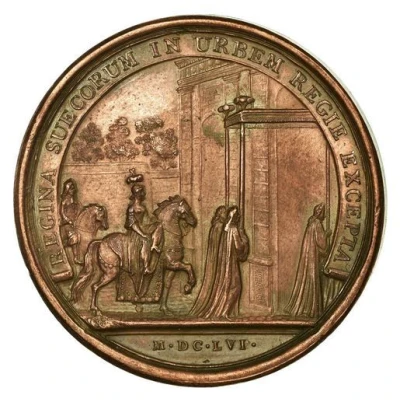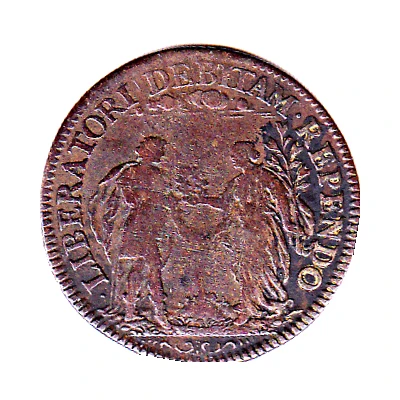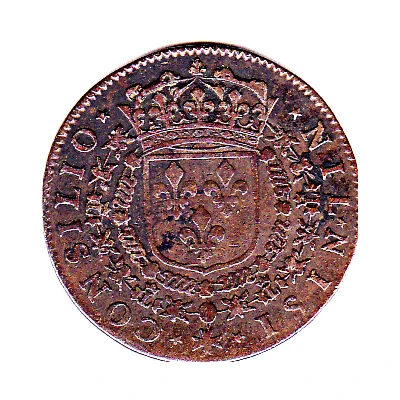Reverse
Circle containing a restorative fountain, and five spouts therefrom, with clouds above. Lettering outside circle, date below in exergue, toothed border
Script: Latin
Lettering:
· COLLIGIT · VT · SPARGAT ·
· 1656 ·
Translation: Colligit ut spargat [It concentrates to redistribute]
Edge
Plain
Comment
Council of the King: In the Middle Ages, the King discussed important matters with the Court, composed of large feudal and ecclesiastical dignitaries. This Court of feudal king (the "curia regis") gradually detach several institutions including the Parliament and the Chamber of Accounts, in the fourteenth century, then under Louis XI, the Grand Council, whose members are chosen by the King. The role of advisor to the King, sitting in council, is not limited to using a single management, but involves a beneficial interest in the affairs of the kingdom. During the fourteenth and fifteenth centuries, this "Grand Council" becomes THE Government Council for political affairs, administrative, financial and judicial. It is composed of princes of the blood and peers, the great officers of the Crown and dignitaries of the Kingdom chosen by the King. In 1497, a judicial section detaches itself and takes the name of the Grand Council, judging ecclesiastical affairs and conflicts of jurisdiction between the supreme courts. In the sixteenth century, the complexity of business forced the rulers to share the King's Council in specialized sections: the Business Council for Political Affairs, the Council of Parties (or Privy Council) for routine business of justice and administration; and most important State Council for the affairs of the Interior and Exterior. It was not until the reign of Louis XIV to see if implementing the King's Council as it will be until the end of the ancient regime, that is to say, divided into four sections: The Board On High (or Council of State), which meets two to three times a week around the King and Ministers of State to address the most important business of the Kingdom and the Council of Dispatches for Home Affairs and the Finance Council chaired by the King and including the Comptroller General of Finance (for budget matters, the size distribution, etc..), The Council of State private, finance and management, chaired by the King or the Chancellor and consists of thirty councilors of state and masters of requests about 80 to settle private disputes, preparing edicts and orders of the King, instructing financial affairs and settle administrative disputes.
